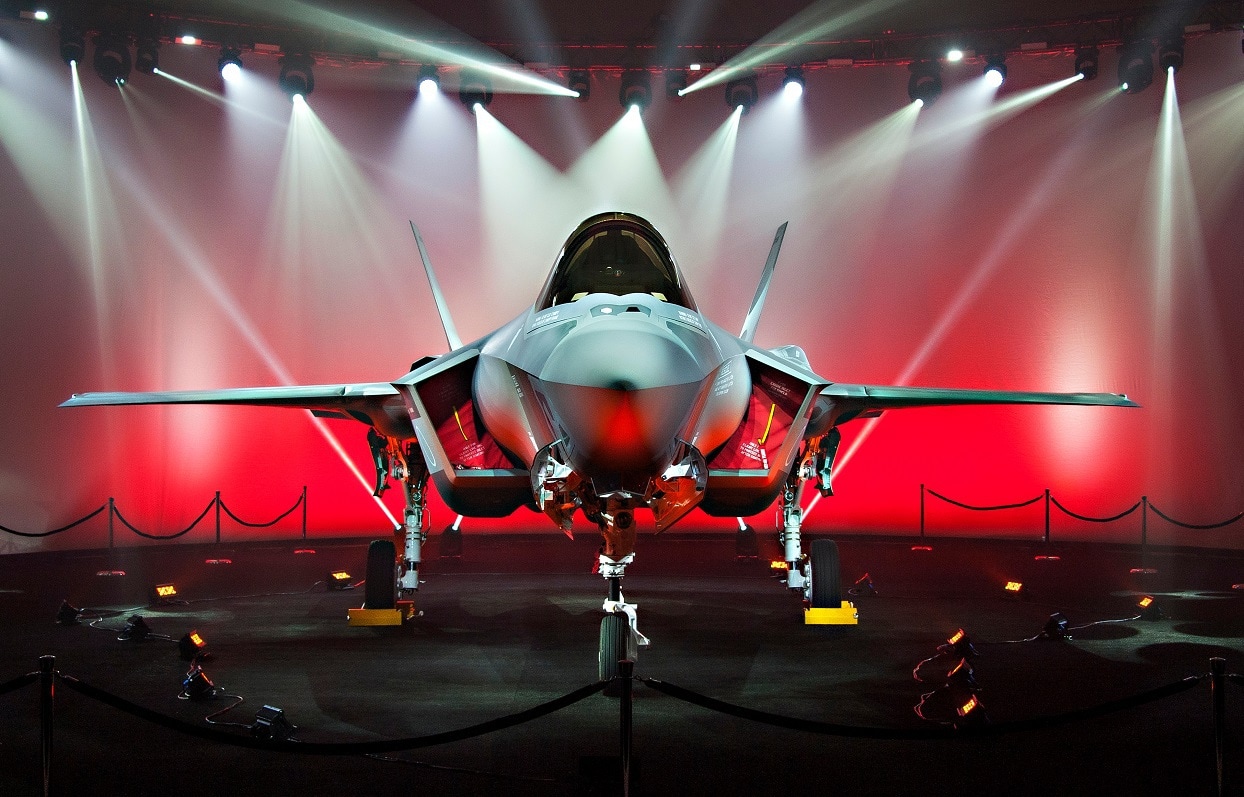The recent crash of an F-35B in North Carolina was a trigger for critics to trot out every hoary and misleading argument against this aircraft. We were treated to largely debunked claims that the fifth-generation aircraft was difficult to operate, unsafe, hard to maintain, and expensive. What these same critics consistently fail to acknowledge is that the F-35 actually has a better safety record for this stage in its operation. What also too often goes unsaid is that the fifth-generation platform is a transformational capability, able not only to dominate both the air-to-air and air-to-ground environments but also to serve as a sensor node to improve the performance of older, fourth-generation aircraft. By every reasonable measure, the F-35 is the best fighter in the world.
The U.S. Marine Corps and several U.S. allies, including the UK and Italy, operate the F-35B. This variant of the F-35 is different from the A and C models, operated by the U.S. Air Force and Navy, respectively, insofar as it is capable of short takeoffs and vertical landings. In most other respects – sensors, flight systems, computers, and weapons – the B model is as capable as the others.
Once again, critics jumped on this accident to attempt to trash the F-35 fighter program. But instead of addressing this particular incident, they chose to repeat old and generally refuted arguments against the program as a whole. These critics sought to connect technical problems the program has experienced (most of which have been rapidly addressed) with the crash of this aircraft.
A thousand delivered aircraft, particularly one as transformational as the F-35, will experience technical challenges. This is not surprising when one considers that the F-35 is essentially a flying sensor powered by many millions of lines of code.
The reality is that the F-35 has a better safety record up to this point in its development than previous generations of fighters. The journal Aerotime looked at the data and concluded that the “data shows that the F-35 is actually the safest fighter jet in recent years: it crashes less and results in fewer fatalities than the fourth-generation counterparts.” The magazine points out that simpler aircraft, such as the A-10 and F-16, suffered dozens of crashes over the same number of years.
That well-known aerospace analyst, Bill Maher, complained that we had spent $1.5 trillion on the F-35. This oft-cited figure refers not to what has been already paid, but what the Department of Defense may spend over the next half century to operate and sustain the entire expected fleet of 2,400 F-35s. This eye-watering figure is entirely speculative and does not reflect changes in technologies and processes that can reduce operating costs over time. Moreover, it is misleading to throw out this number without also acknowledging that using the same metrics, it will cost nearly four times as much to maintain the current fleets of fourth-generation fighters.
In addition, the cost of the F-35 has been going down over the past decade. It now costs less to acquire the Air Force variant, the F-35A, with all its sensors, avionics, and networking systems, as it does to acquire any other U.S.-made fourth-generation fighter when government-furnished equipment is added to the basic airframe and engine. If DoD had decided to continue to acquire the F-35 at the most economical rate, the price of the aircraft would continue to decline.
What the U.S. military and more than a dozen other countries get for their investment in the F-35 is the best multi-role fighter in the world. In recent Red Flag aerial wargames run by the U.S. Air Force, the F-35 racked up a 20:1 kill ratio. In scenarios where the F-35 acted as a stealthy, passive sensor passing information along to non-stealthy aircraft, it improved their scores as well. Planned upgrades to the F-35’s hardware and software will allow it to deploy a broad range of advanced air-to-air and air-to-ground munitions.
The critics’ argument that the F-35 costs too much and doesn’t work is belied by the evidence provided by all the foreign nations that have chosen the F-35 as their top-of-the-line fighter. Each of these did their own due diligence before selecting the F-35. The Swiss government concluded that “The F-35A has the lowest operating costs of all of the candidates evaluated.” Israel, not a country known for acquiring failed military platforms, initially decided to acquire two squadrons of F-35s. Israel has decided to acquire a third squadron based on its experience employing the aircraft in the heavy Syrian air defense environment. Countries that recently chose to acquire the F-35 include Germany, Poland, Finland, and the Czech Republic. How could all these nations be so wrong?
The F-35B, with its ability to take off from short runways and land vertically, can play a unique role in future conflicts, particularly in the Western Pacific. Operated forward by distributed Marine Corps units, the B variant can serve as an advanced sensor platform in support of distributed maritime operations and the conduct of air defense missions and anti-shipping strikes. The F-35B can be deployed on large deck amphibious warfare ships, turning them into light aircraft carriers. U.S. Marine Corps F-35s recently operated from the British aircraft Carrier Queen Elizabeth during that vessel’s deployment to the Indo-Pacific.
No major acquisition program is without flaws and missteps. The F-35 program has weathered a number of these. Nonetheless, it has proven to be a highly effective platform and the free world’s premier fifth-generation fighter.
About the Author
Dr. Daniel Goure is Senior Vice President of the Lexington Institute, a nonprofit public-policy research organization headquartered in Arlington, Virginia. He is involved in a wide range of issues as part of the institute’s national security program. Goure is 19FortyFive Conributing Editor.
Note: This piece has been updated since publication.

